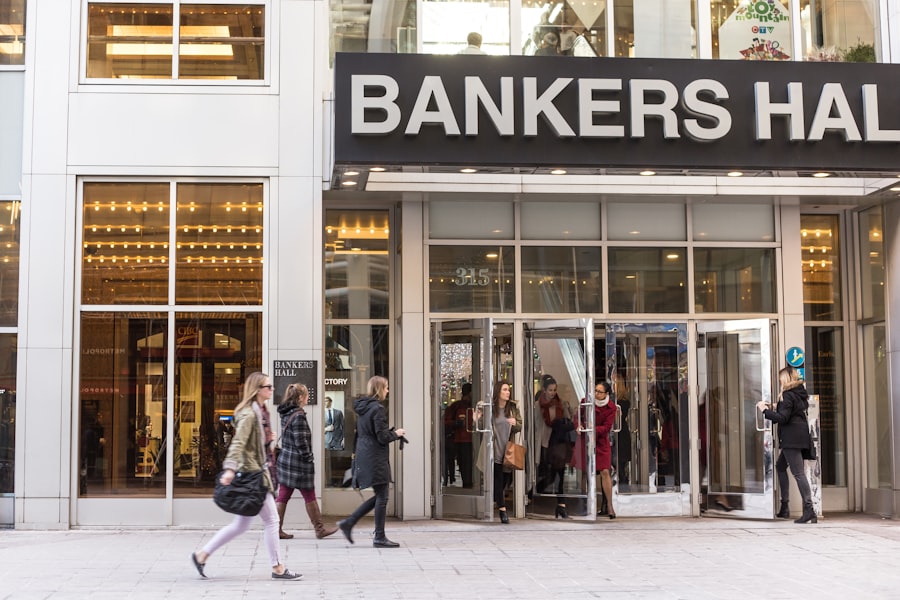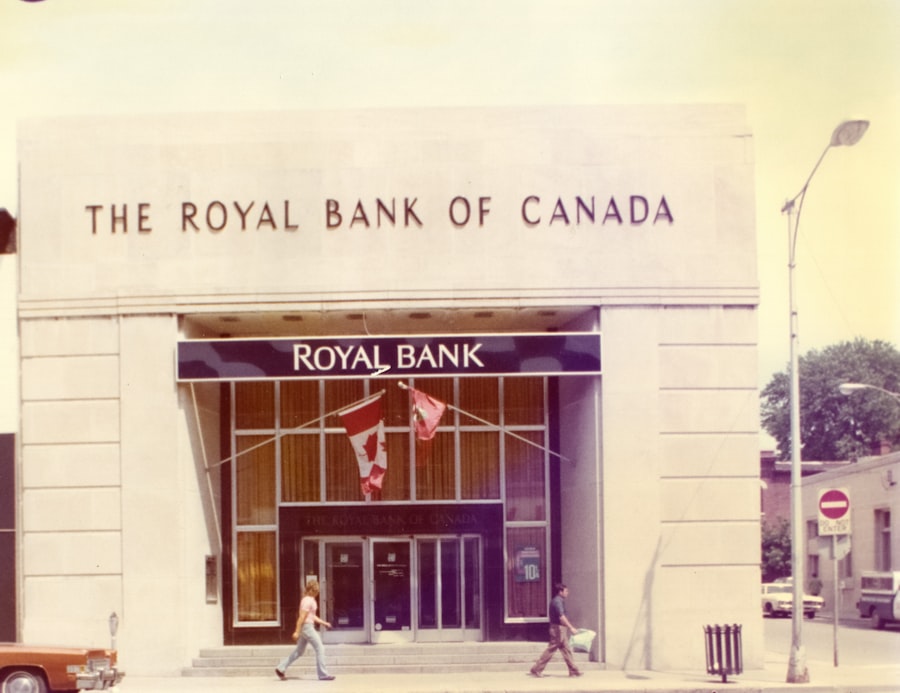In today’s digital age, banking scams have become increasingly sophisticated, making it essential for you to stay informed about the most common types. One prevalent scam is the phishing scheme, where fraudsters impersonate legitimate institutions to trick you into revealing sensitive information. These scams can take various forms, including emails, phone calls, or even text messages that appear to come from your bank.
The goal is to create a sense of urgency, prompting you to act quickly without thinking critically about the request. By understanding these tactics, you can better protect yourself from falling victim to such schemes. Another common scam is the “advance-fee fraud,” where you might receive an enticing offer that promises large sums of money in exchange for a small upfront payment.
This could be framed as a lottery win or an inheritance from a distant relative. The catch is that once you pay the fee, the promised funds never materialize, leaving you out of pocket and without recourse. Recognizing these scams is crucial; they often prey on your hopes and dreams, making it vital for you to approach unsolicited offers with skepticism and caution.
Key Takeaways
- Banking scams are common and can take many forms, including phishing, unsolicited phone calls, and ATM skimming devices.
- Phishing emails and texts often appear legitimate but are designed to trick you into revealing personal information or login credentials.
- Safeguard your personal information by being cautious about who you share it with and using strong, unique passwords for online banking.
- Use secure and trusted websites for online banking to ensure your information is protected from potential scams and fraud.
- Set up two-factor authentication for an extra layer of security when logging into your online banking accounts.
Recognizing Phishing Emails and Texts
Phishing emails and texts are designed to look legitimate, often mimicking the branding and language of your bank or other trusted entities. When you receive a message that prompts you to click on a link or provide personal information, take a moment to scrutinize it closely. Look for signs of phishing, such as poor grammar, misspellings, or generic greetings like “Dear Customer.” Legitimate institutions typically address you by your name and maintain a professional tone.
If something feels off, trust your instincts and refrain from engaging with the message. Additionally, be cautious of links embedded in emails or texts. Instead of clicking on them directly, consider visiting your bank’s website by typing the URL into your browser.
This way, you can ensure that you are accessing the official site rather than a fraudulent one. If you’re ever in doubt about the authenticity of a message, don’t hesitate to contact your bank directly using a verified phone number or email address. Taking these precautions can significantly reduce your risk of falling victim to phishing scams.
Safeguarding Your Personal Information

Your personal information is a valuable asset that should be protected diligently. One of the most effective ways to safeguard it is by being mindful of what you share online and with whom. Avoid posting sensitive details such as your full name, address, phone number, or financial information on social media platforms.
Scammers often scour these sites for personal data that can be used to impersonate you or gain access to your accounts. By limiting the information you share publicly, you can reduce the chances of becoming a target. Moreover, consider using strong and unique passwords for each of your online accounts.
A robust password typically includes a mix of uppercase and lowercase letters, numbers, and special characters. It’s also wise to change your passwords regularly and avoid using easily guessable information like birthdays or pet names. Utilizing a password manager can help you keep track of your passwords securely while ensuring that each one is distinct.
By taking these steps, you can create an additional layer of protection against unauthorized access to your personal information.
Using Secure and Trusted Websites for Online Banking
| Website | Security Features | Trustworthiness |
|---|---|---|
| Bank of America | Two-factor authentication, encryption | High |
| Chase Bank | Secure login, fraud monitoring | High |
| Wells Fargo | SSL encryption, account alerts | High |
When engaging in online banking, it’s crucial to ensure that you are using secure and trusted websites. Always check for “https://” at the beginning of the URL, as the “s” indicates that the site is secure and uses encryption to protect your data. Additionally, look for a padlock icon in the address bar; this visual cue signifies that the website has been verified as safe.
If either of these indicators is missing, it’s best to avoid entering any personal information on that site. Furthermore, be cautious about accessing your bank account over public Wi-Fi networks. While convenient, these networks can be breeding grounds for cybercriminals looking to intercept your data.
If you must use public Wi-Fi, consider utilizing a virtual private network (VPN) to encrypt your internet connection and protect your information from prying eyes. By being vigilant about the websites you use for online banking and taking necessary precautions, you can significantly reduce your risk of falling victim to online scams.
Setting Up Two-Factor Authentication
Two-factor authentication (2FA) adds an extra layer of security to your online accounts by requiring not only your password but also a second form of verification before granting access. This could be a code sent to your mobile device or an authentication app that generates time-sensitive codes. By enabling 2FA on your banking accounts and other sensitive platforms, you make it significantly more difficult for unauthorized users to gain access even if they manage to obtain your password.
Setting up 2FA is typically straightforward; most banks provide clear instructions on how to enable this feature within their online banking settings. Once activated, you’ll receive a prompt for the second factor whenever you log in from an unrecognized device or location. While this may seem like an extra step in your login process, it’s a small price to pay for enhanced security.
By adopting two-factor authentication, you can greatly bolster your defenses against potential banking scams.
Being Wary of Unsolicited Phone Calls

Unsolicited phone calls are another common tactic used by scammers attempting to gain access to your personal information. These calls may come from individuals claiming to be representatives from your bank or other financial institutions, often using high-pressure tactics to elicit sensitive details from you. If you receive such a call, remain calm and do not provide any information until you have verified the caller’s identity.
A good practice is to hang up and call back using a verified number from your bank’s official website or documentation. This ensures that you are speaking with a legitimate representative rather than a scammer posing as one. Additionally, be cautious about sharing personal information over the phone; legitimate institutions will never ask for sensitive details like passwords or Social Security numbers in an unsolicited call.
By staying vigilant and skeptical of unsolicited phone calls, you can protect yourself from potential scams.
Avoiding ATM Skimming Devices
ATM skimming is a method used by criminals to capture card information when you use an ATM or point-of-sale terminal. These devices are often discreetly attached to card readers and can go unnoticed by unsuspecting users. To protect yourself from skimming devices, always inspect the ATM before using it; look for any unusual attachments or signs of tampering around the card slot or keypad.
When using an ATM, cover your PIN entry with your hand to prevent hidden cameras from capturing it. Additionally, try to use ATMs located in well-lit and secure areas, such as bank branches or reputable establishments. If something feels off about an ATM or if it appears damaged in any way, it’s best to find another machine rather than risk compromising your card information.
By being aware of skimming devices and taking preventive measures, you can safeguard your financial data effectively.
Checking Your Accounts Regularly for Suspicious Activity
Regularly monitoring your bank accounts is one of the most effective ways to catch suspicious activity early on. Make it a habit to review your account statements frequently—ideally weekly or monthly—to identify any unauthorized transactions or discrepancies promptly. Many banks offer mobile apps that allow you to check your balances and transaction history easily; take advantage of these tools to stay informed about your finances.
If you notice any unfamiliar transactions or charges that don’t align with your spending habits, report them immediately to your bank. Quick action can help mitigate potential losses and prevent further unauthorized access to your account. Additionally, consider setting up account alerts for transactions over a certain amount; this way, you’ll receive notifications whenever significant activity occurs in real-time.
By staying vigilant about monitoring your accounts, you can enhance your financial security and respond swiftly if something seems amiss.
Educating Yourself on Social Engineering Tactics
Social engineering tactics are psychological manipulation techniques used by scammers to trick individuals into divulging confidential information. Understanding these tactics can empower you to recognize when someone is attempting to exploit your trust or emotions for their gain. Common strategies include creating a sense of urgency or fear—such as claiming that your account will be suspended unless immediate action is taken—or appealing to sympathy by posing as someone in distress.
To protect yourself from social engineering scams, educate yourself about these tactics and remain skeptical when approached by unknown individuals seeking personal information. Always take a moment to think critically about requests for sensitive data; if something feels off or too good to be true, it probably is. By arming yourself with knowledge about social engineering techniques, you can better defend against potential scams targeting your personal information.
Reporting Suspicious Activity to Your Bank
If you suspect that you’ve encountered a scam or noticed suspicious activity on your account, it’s crucial to report it immediately to your bank. Most financial institutions have dedicated fraud departments equipped to handle such situations efficiently. When reporting suspicious activity, provide as much detail as possible—such as transaction dates, amounts, and descriptions—to assist them in their investigation.
Your prompt reporting not only helps protect your account but also aids in preventing others from falling victim to similar scams.
By taking swift action when faced with suspicious activity, you play an active role in safeguarding not only your finances but also those of other customers.
Seeking Professional Help if You Fall Victim to a Banking Scam
If you find yourself falling victim to a banking scam despite taking precautions, it’s essential not to panic but rather seek professional help immediately. Contacting your bank should be your first step; they can guide you through the process of securing your account and potentially recovering lost funds. Many banks have fraud protection policies in place that may cover certain losses incurred due to scams.
In addition to notifying your bank, consider reporting the incident to local law enforcement and relevant consumer protection agencies such as the Federal Trade Commission (FTC). Documenting the scam thoroughly will aid in any investigations and help prevent others from experiencing similar issues in the future. Remember that falling victim to a scam does not reflect poorly on you; scammers are increasingly sophisticated in their methods.
Seeking help promptly can mitigate damage and provide peace of mind as you navigate the aftermath of such an experience.
In today’s digital age, banking scams have become increasingly sophisticated, making it crucial for individuals to stay informed and vigilant. One effective way to protect yourself is by understanding the common tactics used by scammers and learning how to recognize them. For more detailed insights on safeguarding your finances, you can read a related article on how to avoid banking scams by visiting this page. This resource provides valuable tips and strategies to help you identify potential threats and secure your banking information against fraudulent activities.
WATCH THIS! 🏦 1 Billion Dollar Scam That Banks Won’t Stop 🤑
FAQs
What are banking scams?
Banking scams are fraudulent activities that aim to steal money or personal information from individuals or businesses through deceptive means. These scams can occur through various channels, including phone calls, emails, text messages, and even in-person interactions.
How can I avoid banking scams?
To avoid banking scams, it is important to be cautious and vigilant. Some tips to avoid banking scams include:
– Never share personal or financial information with unsolicited callers or through unsolicited emails or text messages.
– Verify the identity of the person or organization contacting you before providing any sensitive information.
– Be wary of offers that seem too good to be true or require urgent action.
– Regularly monitor your bank accounts and credit reports for any unauthorized activity.
– Use strong, unique passwords for your online banking accounts and enable two-factor authentication if available.
What are some common types of banking scams?
Common types of banking scams include:
– Phishing scams, where fraudsters impersonate legitimate organizations to trick individuals into providing personal or financial information.
– Fake check scams, where individuals are sent a fraudulent check and asked to deposit it, then send a portion of the funds back to the scammer.
– Identity theft, where personal information is stolen and used to open fraudulent bank accounts or make unauthorized transactions.
– Investment scams, where individuals are persuaded to invest in fake or non-existent opportunities.
What should I do if I suspect I have been targeted by a banking scam?
If you suspect you have been targeted by a banking scam, it is important to take action immediately. This may include:
– Contacting your bank or financial institution to report the suspicious activity and request a freeze on your accounts if necessary.
– Reporting the scam to the appropriate authorities, such as the Federal Trade Commission (FTC) or the Consumer Financial Protection Bureau (CFPB).
– Changing your passwords and monitoring your accounts for any unauthorized activity.
– Being cautious of any further communication from the scammer and avoiding any further engagement.
